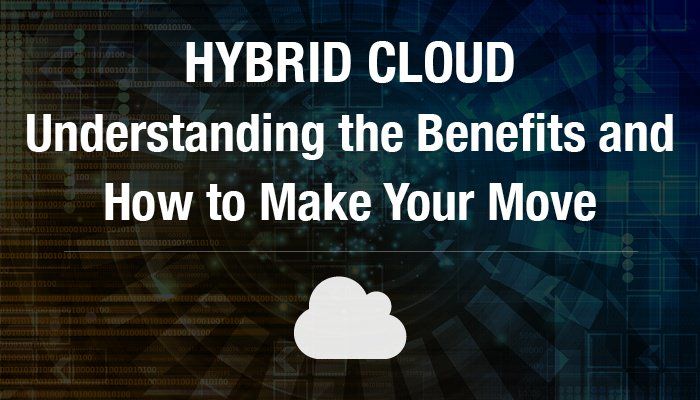
By now, you've probably learned at least something about the potential benefits of moving your IT systems to the cloud, and perhaps you're already thinking of how to go about making the move. At the same time, exploring the cloud has most likely led you to realize that it isn't a good fit for all of your workloads. This is where the concept of the hybrid cloud comes into play. By joining one or more public cloud instances together with private cloud or on premises systems, you'll be able to design a complete integrated IT infrastructure that capitalizes on the best aspects of all its individual parts.
In this post, we'll explore what an ideal hybrid cloud infrastructure might look like, and then spend a little time talking about the best ways to get started with your move to hybrid cloud.
Better IT economics
Of course, when it comes to understanding the benefits of any cloud environment, lowering costs has to be an important part of the conversation. Hybrid cloud is no exception, as making the move to hybrid cloud will logically involve identifying which workloads and data stores the business could move to the cloud in order to save the most money possible.
Identifying workloads that can be moved to the public cloud element of your hybrid cloud system can reduce the need for large capital investments to support those workloads, and instead replace them with manageable operating expenses that can be factored into the budget over time. This fact can free up funds now to enable the organization to invest in innovation initiatives in other parts of the business.
Prepare for future data growth with scalability
For many organizations, the unprecedented growth of data going on in the business world today is one of the primary drivers for considering cloud in the first place. A hybrid cloud environment can help account for this need by enabling limitless growth on the public cloud side.
Rather than having to invest in new data centers periodically to keep up with the extremely high rate of data growth, businesses need only to identify what data sources they can safely move to public cloud without giving up needed security and visibility. As new data gets created from these sources, the organization can scale their public cloud effortlessly to keep up with that growth.
Greater security and resiliency
There are a variety of reasons that public cloud environments aren’t a good choice for all IT workloads, and the need to establish security is chief among them. A hybrid cloud environment can help balance the need to provide increased security for certain workloads with other important considerations such as resiliency and disaster recovery.
To put it simply, cloud data storage can play an integral role in establishing a disaster recovery program, because data is much more resilient when it isn’t confined to any one physical data center. At the same time, keeping certain vulnerable data on premises allows the organization to apply their own high security standards to that data, ensuring that it’s completely safe and in compliance with applicable regulations.
Learn More About RightCloud
Getting started
Looking at the key benefits of hybrid cloud should have led you to an important conclusion that you can use as you plan your migration: hybrid cloud is all about determining what workloads and data need to go where, and then building the right environment to make that happen. If you're looking to determine what your ideal hybrid cloud environment might look like, start by scheduling a free RightCloud assessment from Cima Solutions Group. We'll help you look at your business' existing workloads, think about how to meet those needs from a cloud perspective, and then help you plan your migration accordingly. Contact us today to get started!



Leave a comment!